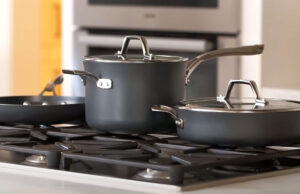As an Amazon Associate, I earn from qualifying purchases at no extra cost to you.
How Much to Install a Dishwasher Where There Was None
It started with a pile of dishes after dinner one night. I remember thinking, “Why don’t we just get a dishwasher?” But then came the real question—how much to install a dishwasher where there was none? The idea seemed simple, but the costs and steps were not.
Estimate the cost first, including plumbing and electrical work. Measure the space properly and choose a dishwasher that fits. Plan plumbing and electrical connections carefully. Hire professionals if needed for safe installation. Add a water line, drain, and power supply correctly. Finally, test the unit and check for leaks or noise before finishing up.
Check Your Kitchen Layout and Space
Before anything else, you need to see if your kitchen can actually handle a new dishwasher. Many older kitchens weren’t designed with this appliance in mind. Look under your counters, check your cabinets, and see if there’s enough space near your sink for plumbing access. Most dishwashers are 24 inches wide, so you’ll need that much room to spare.
Sometimes, people think they can just squeeze it in beside the fridge, but that’s rarely practical. You’ll need to be near both water and drainage lines. I’ve seen folks try to install it across the kitchen, and they end up with long hoses snaking along the floor—definitely not ideal. Measure carefully and visualize where it will go before anything else.
Another thing to think about is ventilation and door clearance. A dishwasher door that hits the cabinet or oven when opened can be a real pain. Also, if you’re working with a small kitchen, you might need to remove a cabinet entirely. It sounds scary, but sometimes that’s the easiest way.
Lastly, check your flooring height. If you recently added new tiles, the extra height might make the space too tight. Small details like this can make a big difference later when you try to slide the machine in.
- Measure at least 24 inches width, 24 inches depth, and 35 inches height
- Place it close to sink plumbing
- Ensure door clearance and airflow
- Check flooring and counter height
Estimate the Cost and Gather All Supplies
Now comes the big question—how much to install a dishwasher where there was none? The cost can range anywhere from $600 to $1,500, depending on what’s already there. If your kitchen needs new plumbing and wiring, the total may go higher. But don’t worry; knowing what you need upfront helps a lot.
Start by listing all the materials. You’ll need water lines, a drain hose, electrical wiring, connectors, and possibly a junction box. It sounds like a lot, but hardware stores usually carry everything in one aisle. Sometimes it’s cheaper to buy a dishwasher installation kit that includes most of these parts.
Hiring help can make a difference too. A plumber might charge around $150 to $300, while an electrician could cost another $200 or more. If you’re handy, you can save money doing parts of it yourself. However, it’s always smart to let professionals handle the wiring to stay safe and meet local codes.
Before buying anything, check your home’s water pressure and electrical capacity. Dishwashers need a 120-volt power source and a dedicated breaker. Skipping this check could mean extra costs later when things don’t fit or power trips happen.
- Typical total cost: $600–$1,500
- Plumber: $150–$300 | Electrician: $200–$400
- Get an installation kit for easier setup
- Verify power supply and water pressure
Plan Plumbing and Electrical Connections
Plumbing and wiring are where most people get stuck. Dishwashers need both clean water coming in and dirty water draining out. Ideally, it should connect directly to the sink’s water line and garbage disposal, if you have one. If not, you’ll need to add a drain line connection under your sink.
For the water line, use a stainless steel braided hose—it’s durable and less likely to leak. Some people use copper tubing, but flexible hoses are easier for tight spaces. Always shut off your home’s water before starting any connections to avoid surprise floods.
On the electrical side, most modern dishwashers need a grounded outlet or hardwired connection. If your kitchen doesn’t have one nearby, an electrician can install it safely. Never use an extension cord; it’s unsafe and won’t meet code. It’s better to spend a bit more for a proper setup.
Lastly, think about safety and convenience. Install a shut-off valve specifically for the dishwasher’s water line. It’s a small thing, but it’ll save you stress if you ever need to repair or replace the appliance later.
- Connect water and drain lines near sink
- Use flexible stainless-steel hose
- Add shut-off valve for future use
- Hire an electrician for outlet or wiring setup
Install the Dishwasher Step by Step
Now that everything’s ready, it’s time to install. Start by connecting the water line and drain hose before sliding the dishwasher into its spot. It’s easier to work when you have space to move around. Once those are attached, carefully slide it into place, guiding the hoses so they don’t kink.
Next, connect the electrical wiring or plug it in if it’s a corded model. Secure the dishwasher with mounting brackets to prevent it from tipping forward when the door opens. It’s a simple detail but one people often forget. Check that it sits level; uneven placement can cause leaks and extra noise.
After everything is connected, run a short test cycle. Look underneath for any water drips. Sometimes even a tiny leak can cause major floor damage over time. Tighten any fittings if needed and double-check that the drain hose loops upward before connecting—it prevents dirty water from backflowing.
Finally, once everything works smoothly, screw the unit securely to the counter. Reinstall any cabinet trim or panels you removed earlier. Step back and admire your work—you’ve just added a huge upgrade to your kitchen.
- Attach hoses before pushing in the unit
- Level and secure with mounting brackets
- Test cycle for leaks and noise
- Reinstall trim and check final alignment
Test for Leaks and Performance
Once the dishwasher is installed, testing is essential. Fill it with a few dishes and run a short wash cycle. While it runs, watch for drips near the base or under the sink. Even the smallest leak can cause serious water damage over time, especially on wooden cabinets or floors.
Pay attention to how it sounds too. A dishwasher that rattles or hums loudly may not be level. Adjust the front legs slightly until it sits perfectly stable. It’s a simple fix that can make a big difference in long-term performance.
Check how fast it drains as well. If you see water pooling inside, the drain hose might be kinked or too low. The hose should always form a high loop before connecting under the sink. This keeps dirty water from flowing back in, keeping your dishes clean.
When you’re satisfied with how it runs, clean the exterior and wipe off fingerprints. Label the new shut-off valve and breaker so anyone else in your home knows where they are. Small touches like this show care and make future maintenance easier.
- Check for leaks during test run
- Listen for unusual sounds or rattles
- Ensure drain hose forms a high loop
- Clean up and label shut-off points
Add Finishing Touches and Maintenance Tips
Now that your dishwasher is up and running, it’s time to keep it that way. Regular maintenance will make it last longer and prevent problems. Start by cleaning the filter every couple of weeks. Food bits can collect there, causing bad smells or clogging the drain.
Wipe the door seals too. They keep water inside, but over time, soap scum and grime build up. A little vinegar on a cloth works wonders. Once a month, run an empty hot cycle with a cup of white vinegar to clean the inside thoroughly. It helps remove grease and hard water stains.
Also, always scrape off large food bits before loading. You don’t need to prewash everything, but avoiding chunks keeps the drain clear. Check the spray arms occasionally; if the holes get clogged, use a toothpick or pin to clean them out.
Lastly, inspect the hoses every few months. If you notice bulges or cracks, replace them right away. Spending a few minutes on care now saves you big repair bills later.
- Clean filter and seals regularly
- Run vinegar cycle monthly
- Avoid large food scraps inside
- Inspect hoses for wear and tear
Final Thoughts
Installing a dishwasher where there was none may sound intimidating, but it’s totally doable when you plan ahead. Once it’s in, you’ll wonder how you ever lived without it. A few careful steps, some patience, and you’ll have sparkling dishes every day without the mess.
| Item | Average Cost | Notes |
|---|---|---|
| Dishwasher Unit | $400–$900 | Varies by brand and features |
| Plumbing Work | $150–$300 | For new water and drain lines |
| Electrical Setup | $200–$400 | For outlet or hardwiring |
| Installation Kit | $25–$50 | Includes hoses and fittings |
| Shut-off Valve | $15–$25 | Recommended for safety |
| Cabinet Modifications | $100–$250 | If space needs adjustment |
| Labor Total | $400–$800 | Combined average professional cost |
| Total Estimated Cost | $600–$1,500 | Depending on kitchen setup |
Frequently Asked Questions (FAQs)
Is it expensive to install a dishwasher where there was none?
It depends on your kitchen setup. If you already have plumbing and electrical lines nearby, costs can stay around $600 to $800 total. However, if you need new lines, the total can reach $1,200 or more. It’s mostly about how much preparation your kitchen needs. Always get a quote before buying to avoid surprises. Sometimes spending a little extra ensures a safer and longer-lasting setup.
Can I install a dishwasher myself if my kitchen never had one?
Yes, you can if you’re handy with tools and basic plumbing. You’ll need to connect a water line, drain hose, and power supply correctly. However, wiring can be tricky, so hiring an electrician is a smart idea. Many homeowners do most of the work themselves to save money but leave electrical work to pros. It’s a good mix of safety and savings.
Do I need a plumber to install a dishwasher?
In many cases, yes, especially if there’s no existing water line. A plumber can install new lines quickly and correctly, saving you from leaks later. If your kitchen already has plumbing nearby, you might only need minor help. But for first-time installations, a licensed plumber ensures it meets code and runs safely. It’s worth the peace of mind.
Is it safe to connect a dishwasher to an extension cord?
No, it’s never safe to use an extension cord for a dishwasher. These appliances draw a lot of power, and extension cords can overheat. Instead, use a dedicated outlet or hardwire it. An electrician can install a new outlet for around $150–$200. It’s a small investment that keeps your home safe and your dishwasher running smoothly.
Can I install a dishwasher away from the sink?
Technically, yes, but it’s more complicated. The farther it is from the sink, the longer your drain and water lines must be. That increases the risk of leaks and poor drainage. Ideally, place it within a few feet of the sink cabinet. It saves both installation costs and headaches later. Convenience really matters here.
Do I need a special outlet for a dishwasher?
Yes, most dishwashers need a grounded 120-volt outlet. If you don’t have one nearby, an electrician can add it. Some models are hardwired instead of plugged in, so check your manual. Never use a GFCI outlet unless specified—it can trip mid-cycle. Safe electrical setup keeps your dishwasher performing well for years.
Is it cheaper to replace an old dishwasher than add a new one?
Replacing an existing unit is usually cheaper because all plumbing and wiring are already in place. You’ll mainly pay for the new appliance and installation, around $150–$300 total. Installing one from scratch, though, adds plumbing and electrical work. If your kitchen has never had one, expect to spend more upfront but save time daily later.
Do I need a permit to install a dishwasher where there was none?
In most areas, you don’t need a special permit for minor installations. However, if new plumbing or electrical wiring is added, some cities require inspection. Always check local building codes before starting. It’s better to be safe and avoid penalties later. A quick call to your city’s permit office clears up any confusion fast.




